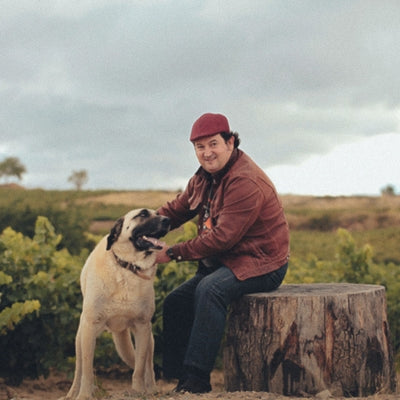
A Halloween History: Romanée-Conti and an Assassin
’Tis the season for devilish deeds and dark tales… and we’ve got a ripping Halloween history to tell that might have been written for wine-lovers.
It’s a story packed with all the gruesome elements of a classic murder mystery—poison injections, a death threat inscribed on parchment, a cemetery appointment in the dark of the night and a hanging. But though this might sound like something dreamed up by Conan Doyle circa 1900, it’s no work of fiction. It’s a true story. It happened in 2010. And the victims of the poisoning? Well they weren’t human at all, but the magnificent vines of Burgundy’s Domaine de la Romanée-Conti—producer of one of the most desirable and expensive wines on the planet.
The Domaine de la Romanée-Conti is Burgundy’s premier wine-producer, responsible for a Pinot Noir of formidable repute. Like its awe-inspiring history, Romanée-Conti’s renown is centuries old. Back in 1780, the Archbishop of Paris called this glorious red, “velvet and satin in bottles.” And you’d be hard-pushed to find more lavish praise than the words of Roald Dahl, who likened drinking Romanée-Conti to “experiencing an orgasm at once in the mouth and the nose.”
To illustrate just how devastating the 2010 attack on the Romanée-Conti domaine could have been—financially, as well as culturally—consider that a single, large-format bottle of the 1999 vintage recently sold for more than $100,000. So you can imagine the fear of estate-owner Aubert de Villaine, when in January 2010 he received an anonymous note threatening the destruction of his priceless heritage.
Chapter one: In which de Villaine receives the first two anonymous letters
Aubert de Villaine received three malicious mailings in total from an unnamed sender. The first, sent in early January, contained a rolled up parchment in a cylindrical tube. On it was sketched a detailed and impressively accurate drawing of the 4.46-acre Romanée-Conti vineyard, with a mysterious circle in the middle of it. An accompanying note warned that de Villaine’s prized yard would be destroyed—unless he complied with the ransom demands which were to follow.
Aubert dismissed the letter as the sick joke of a prankster. But then, a couple of weeks later, a second package arrived on his doorstep. It contained the same kind of cylindrical tube and parchment as before. This time though, the diagram of the vineyard was marked with two circles—an additional one in the top-left corner of the vineyard, much smaller than the first.
The second letter demanded that De Villaine leave one million euros in a suitcase, close to the spot where the small circle was marked on the drawing. To show that the blackmailer meant business, he or she informed the horrified estate-owner that two vines in the area enclosed by the small circle had already been killed by poison. A further 80 vines, located within the large circle, had also been poisoned, but could be saved by an antidote. Provided, that was, that de Villaine paid the extortionate ransom sum.
Chapter two: Crime scene investigation
This time, de Villaine did not hesitate. He immediately called the police, and a team of investigators soon arrived and set to work on the vines. They found that two had indeed been poisoned by herbicide. The assassin had drilled a hole in the foot of each vine, then used a syringe to administer a lethal injection. When the other eighty vines were examined, the police found the same drill holes, but no evidence of poison. The blackmailer’s story was at least in part a bluff.
The police’s discovery not only gave a glimmer of hope for the vineyard—it also revealed a vital clue about the assassin’s identity. The syringe technique used to administer the poison smacked of a traditional method used to protect vines from the phylloxera insect, where liquid carbon disulfide was injected into the soil. It seemed that whoever had sabotaged the vines knew a great deal about winemaking, a suspicion backed up by the appearance of some highly specialized winemaking terminology in the second letter.
Chapter three: The heroic acts of Jean-Charles Cuvelier
On the advice of the police, de Villaine sent his trusted employee Jean-Charles Cuvelier down to the vineyard to set a trap for the grape-vine slaughterer. Instead of the case of money, Cuvelier left a note promising that the ransom would be paid after a period of time needed to gather together such a large sum. A few days later, de Villaine received his third and final anonymous mailing. Please, asked the assassin, with uncharacteristic politeness, deliver the money, in a suitcase, to the cemetery in the nearby town of Chambolle-Musigny, at 11pm on February 12, 2010.
Re-enter Cuvelier, de Villaine’s right-hand man. Here’s where the story gains all the spookiness of a Halloween fireside yarn. Picture the scene in which Cuvelier enters the cemetery in the pitch black, pushing his way through a great, arching, wrought-iron gate, which grates eerily on its hinges. He carries a suitcase carrying one million fake euros—and something else, a tracking device that would activate itself when the bag passed back through the gateway. Cuvelier, with trembling hands, drops the case just inside the fence and flees like a bat out of hell to his car. Half an hour later he receives a phone call from the police. Mission accomplished! The assassin had been captured.
Chapter Four: In which the grape-vine murderer meets the grim reaper
And we can now reveal the identity of the criminal: one Jacques Soltys, a previous offender in his late 50s who’d attended the Lycée Viticole de Beaune wine-making school as an adolescent. Five months after his arrest our tale reaches its grizzly conclusion. Overcome perhaps by remorse in the face of his life of crime, Soltys hung himself in a Dijon prison.
Soltys’ dastardly scheme to poison de Villaine’s precious vineyard was unprecedented. And though it makes for excellent Halloween storytelling, we hope—for the sake of connoisseurs and wine investors everywhere—that Burgundy’s foremost domaine never sees such a crime repeated.
Also in News



